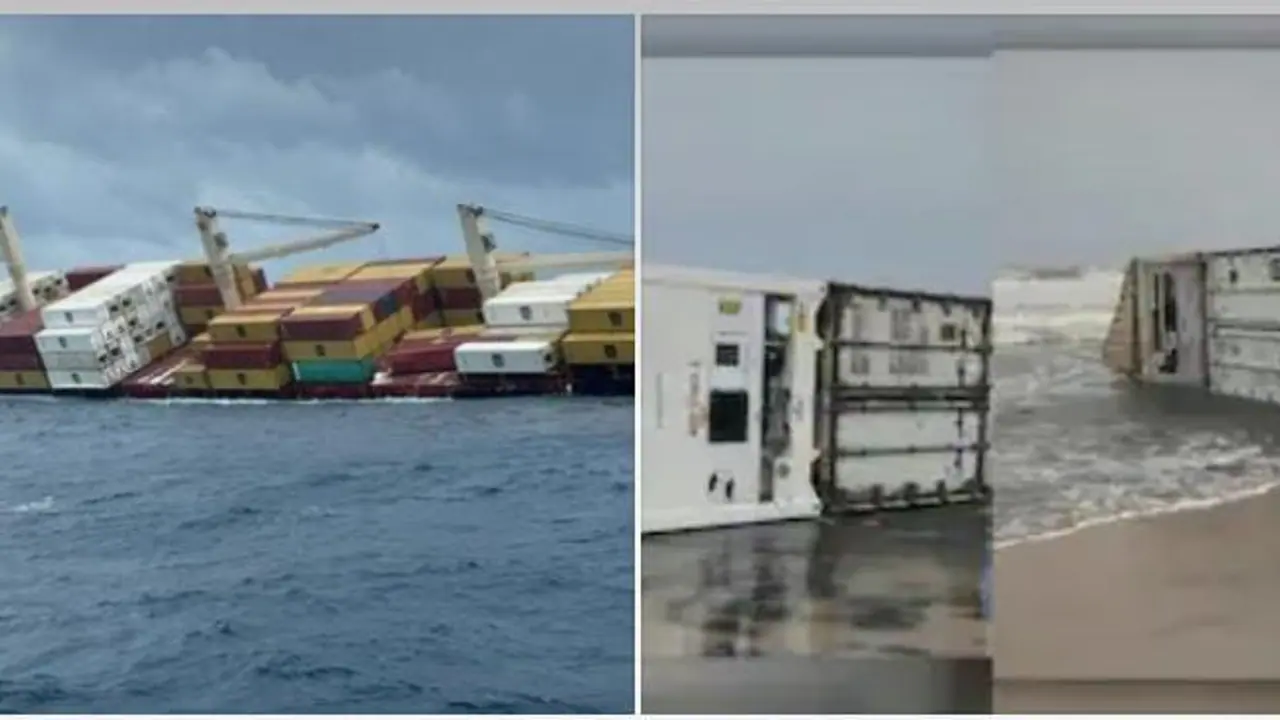If calcium carbide enters the ocean, in cases such as a shipwreck, it poses significant environmental, chemical, and safety risks, especially due to the explosive and corrosive nature of the reaction.
Kochi: The container vessel MSC Elsa 3 sank off Kerala coast on Sunday following a critical emergency at the Arabian sea, and a coordinated rescue operation saved all 24 crew members on board. However, the risk was far from being resolved. At least 13 containers of ‘hazardous material’ had fallen into the sea and washed up ashore, leading to the authorities issuing an alert. The containers carry calcium carbide, a highly reactive chemical compound that can be dangerous when mixed with water.

What is calcium carbide?
Calcium carbide (CaC₂) is a chemical compound composed of calcium and carbon. It's a grayish, crystalline solid that reacts strongly with water to produce acetylene gas (C₂H₂) and calcium hydroxide (Ca(OH)₂). It must be stored in dry conditions and kept away from moisture to prevent unintended gas release. It is used in welding and cutting torches, carbide lamps, steel-making and even fruit-ripening.
When calcium carbide is released into the sea, the highly-flammable Acetylene gas is released. It can form explosive mixtures with air and has a distinct garlic-like odour. The reaction is exothermic, meaning it releases heat. In large quantities, this heat can intensify the risk of a fire breakout or cause violent formation of bubbles in sea. Amid these chemical reactions, a byproduct calcium hydroxide gets released. This is harmful for marine life as it raises the pH level of water.
If calcium carbide enters the ocean, in cases such as a shipwreck, it poses significant environmental, chemical, and safety risks, especially due to the explosive and corrosive nature of the reaction.
Why is there an alert?
The Kerala State Disaster Management Authority (KSDMA) has issued a warning advising the public not to touch any containers or oil that may wash up on shore because of the sinking of the cargo vessel MSC Elsa 3 off the Kerala coast. If a person comes in contact with such materials, it can cause chemical burns, toxic exposure, or explosions, especially if acetylene accumulates in confined or poorly ventilated areas. Containers lost at sea may carry industrial chemicals, corrosive substances, or pressurized items that can rupture or explode when disturbed.
According to reports, an oil spill has been confirmed and the leaked fuel is drifting at approximately three km/h. The ship was carrying 84.44 metric tonnes of diesel and 367.1 metric tonnes of furnace oil, along with containers with calcium carbide, Defence Ministry stated, adding that the vessel was also carrying Marine Gas Oil (MGO) and Very Low Sulphur Fuel Oil (VLSFO).
The significance of the accident
The Liberian-flagged ship had developed a severe 26-degree tilt on Saturday, approximately 38 nautical miles southwest (Nm SW) of Kochi. The Indian Coast Guard and Navy rescued 24 crew members, including the Captain and Engineers of the ship. The loss of a vessel like MSC Elsa 3, operated by the Mediterranean Shipping Company (MSC) — one of the world’s largest shipping lines — could cause significant disruptions to global and regional supply chains.
Case in point is the sinking of MSC Napoli. The ship suffered structural damage during a severe storm in the English Channel in January 2007. It carried 2,318 containers, of which 80 washed ashore. All 26 members of the crew were rescued. The total oil spilled was estimated at 302 tonnes, and the clean-up operation took more than two years.


